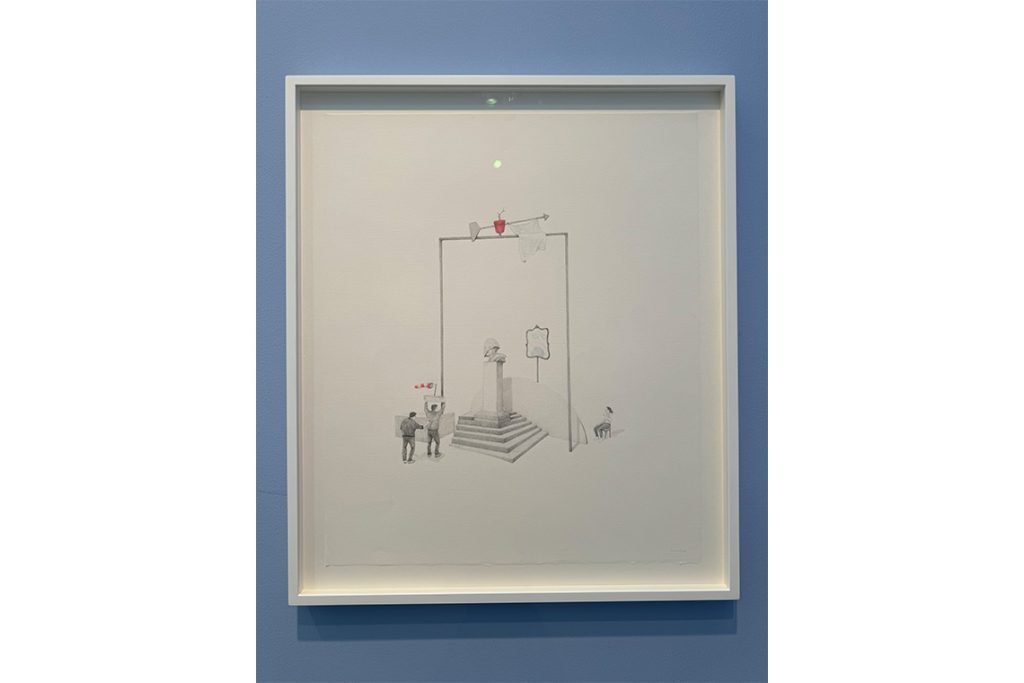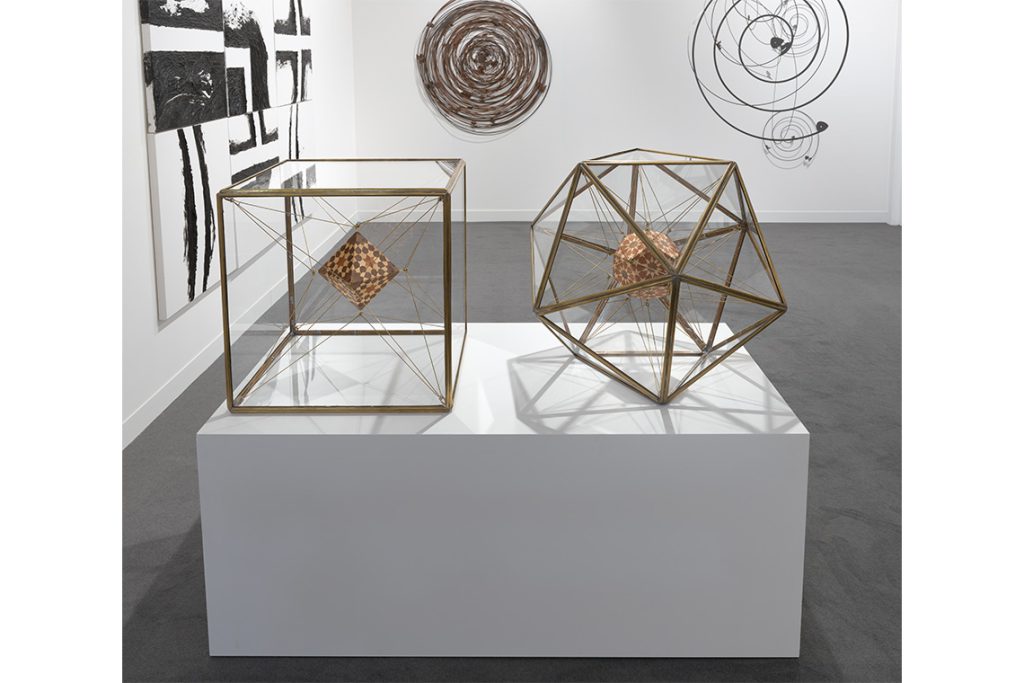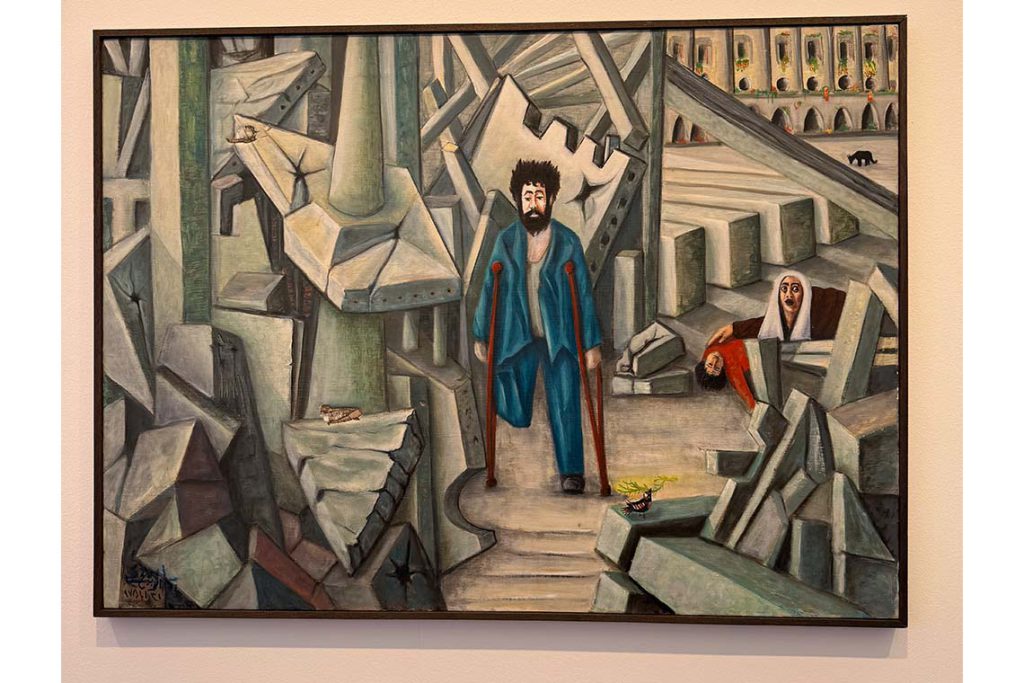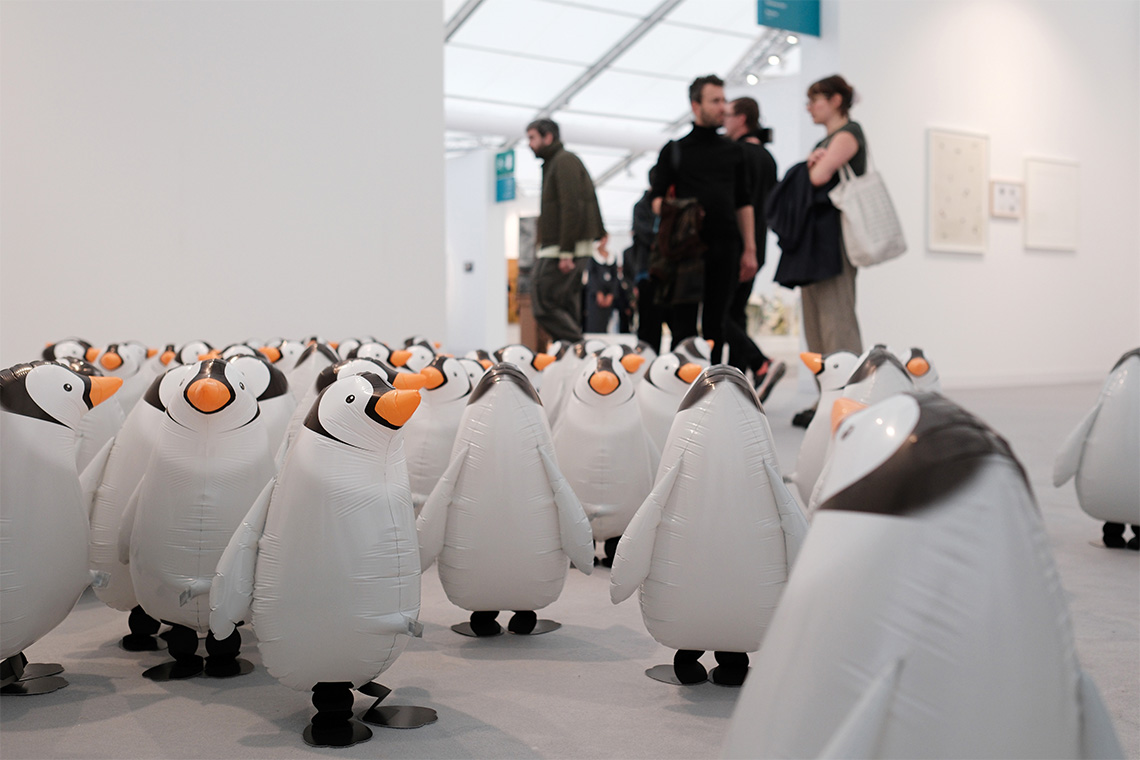The remodeled Frieze London returns to the British capital with the customary abundance of artwork and who’s who in the art scene in attendance, while some hidden gems successfully anchor the fair in current times.
There aren’t any events as buzzy as Frieze in London. The long-running art fair, which takes over a section of Regent’s Park each autumn, has such an influence on the British capital’s art scene that it gives its name to the whole week, “Frieze Week”, when any art gallery around the city worth its toast is hosting at least one event coinciding with the four-day art fair.
The ability to create a sense of eager anticipation and excitement around it is certainly one Frieze’s most impressive feats, second to the crowd it attracts. While naturally one is there to take in the art from the innumerable gallery booths, the people-watching at Frieze is almost as good (if not better on occasion). This year, a remodel of the layout seems to have given the fair a much-needed revamp, with all corners of the giant temporary venue teeming with art world aficionados.

With such a wide selection of galleries from all over the world, it can be difficult to know where to look next. A relatively new Artist-to-Artist section, which debuted to much acclaim in 2023, provides much-needed breathing room. Tucked away to one side of the fair, six solo presentations selected by leading artists give one space to step away from the crowds. Selma Feriani’s booth is home to a series of delicate pencil-on-paper drawings by Massinissa Selmani, selected by Zineb Sedira. They are surprisingly fresh in comparison to the many larger, heavier artworks around the fair, and the incongruous situations represented in them (think a man performing in an empty swimming pool as a bull runs through a series of wooden pegs behind him), combined with their delicacy, make for a charming respite amid the chaos.
After having successfully got lost around the fair several times (I suggest visitors with an agenda leave it at the door unless absolutely necessary), I stumbled upon ATHR gallery. As always with such a wide selection of art, the quality on display varies, but for those looking for refinement and quality, the Saudi Arabia-based gallery will surely do. It is not always easy or appropriate to describe a booth at a bustling art fair as beautiful, but ATHR has pulled off the impossible. From the elegant strength of Nasser Alsalem’s hanging metal sculptures to Dana Awartani’s Octahedron Within a Cube II from The Platonic Solid Duals (2018) next to Dodecahedron within an Icosahedron II from the Platonic Solid Duals (2018), not to mention the large-scale textural painting, The Line, by Ayman Yosri Dayban, ATHR certainly leaves an impression. In a fair filled with colourful artworks, and much more figurative work than in previous years, ATHR sets a welcomingly more serious tone.

Of course, one cannot be serious all the time in art. An installation of inflatable penguins swaying happily on the floor of a Danish Gallery attracted a gaggle of fair-goers giggling around it while taking photos. Drawing a crowd almost as large as the penguins is the Focus section of the fair, dedicated to championing art from younger galleries and showcasing emerging talent. Beirut-based gallery Marfa’ Projects is one of two Lebanese galleries present at Frieze this year, its physical gallery closed due to the ongoing bombardment of Lebanon and its capital. The solo presentation of Stéphanie Saadé, which includes a jumper and pair of shorts pinned to the wall from Geographical Coordinates (2023), on which are embroidered the coordinates of the apartments the artist has lived in since the Beirut port explosions of 2020, are a difficult reminder of the ongoing and escalating instability facing the country. As much as art can transport, given today’s current climate, it seems all the more important to give space to Lebanese and Palestinian artists.

Sfeir-Semler gallery, whose Beirut location is also currently closed, is always ready to represent the region and never shies away from current issues. The star of the show is, somehow inevitably, a wonderfully vivid abstract painting by Samia Halaby, Order Disorder Surprising Event (2024), in which blocks of colour full of energy vibrate off the canvas in an upward motion. Right next to it, two smaller paintings by Aref El Rayes, Désastre de la guerre populaire libanaise (Disaster of the Lebanese popular war) (1978) and Misère de la guerre populaire libanaise (Misery of the Lebanese popular war) (1978), depicting scenes of war in Lebanon starkly contrasted with the scene of a man missing a leg standing in the ruins of a building – all too painfully reminiscent of the current images coming out of Gaza and Lebanon. Existence is resistance, as they say, and presence in an art fair of this scale cannot be undervalued. A modest work on the floor, propped up against the wall and by Palestinian artist Taysir Batniji, tells a touching story of the artist encountering a window in France which reminded him of his home in Gaza. On it, he has taped a painting of a Gaza sky, to create a Travelling Window (1999), in perhaps the most understated yet poignant work of the fair.
There’s no denying that at times Frieze can seem filled with fluff, but surely one of the roles of an art fair is to showcase insightful and interesting artwork. Frieze London 2024 does this with aplomb and at a time of growing censorship, especially in the art world, serves as a comforting reminder that art can give a space and voice to those who need it. Frieze can and should be multifaceted: a place where one can find entertainment, beauty, innovation and, if one knows where to look, a little piece of the realities of the outside world in turbulent times.



